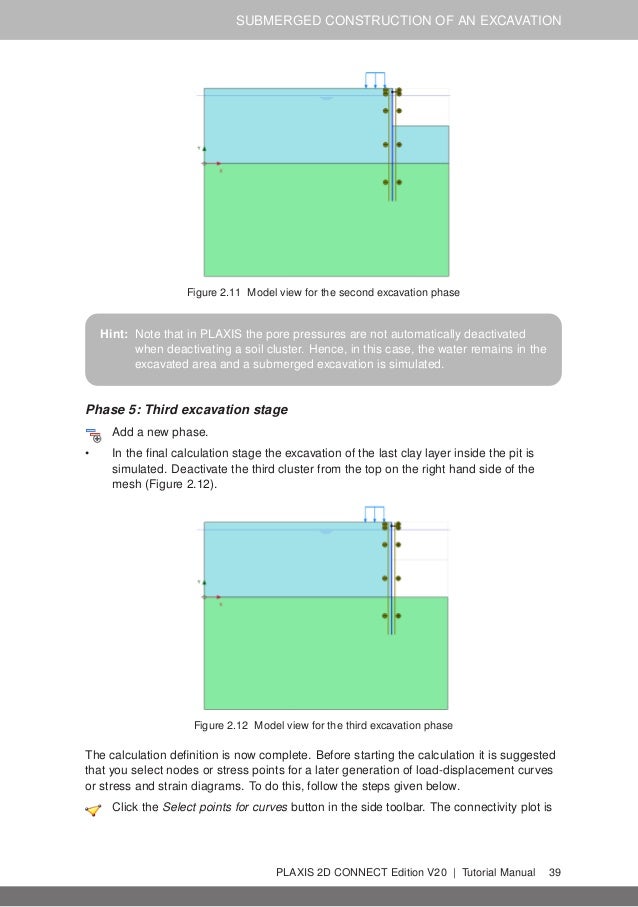
Unfortunately the stresses obtained from flow only analysis aren't reliabale, are they? Isn't a fully coupled analysis supposed to deliver the same seepage patterns resulted from a flow only analysis? Is there anyway to run a plastic analysis following a flow only analysis? Seepage resulted from a flow only analysis was more realistic than that resulted from a fully coupled flow deformation analysis. Introducing interfaces into the model didn't change the seepage path inside the dam that much.
#Plaxis 2d examples Pc#
Is it suitable to model PC as normal concrete or as soil? Which one is better in your opinion? But I have an additional question for you: isn't plastic concrete by definition somewhere between concrete and soil element? Plastic concrete differs from normal concrete in composition and in compressive strength, wheres the compressive strength of the plastic concrete is almost 1/10 of the compressive strength of normal concrete, not to mention that PC is more ductile. I've never known that the creep behaviour of concrete could be included in plaxis 2d, thank you for the remark. In addition, the available input prameters that I have are only valid for the SSC model. The reason behind using the soft soil creep model to define the cut off wall material is because I am relying on a study, which has studied the creep behaviour of plastic concrete using the soft soil creep model. The cutt of wall was modelled as a soil element with low permeabilty and the drainage type was set to drained. Thank you very much for your kindly response. PLAXIS | Bentley Systems, Inc, Geotechnical Analysis You can see these via Stresses > Groundwater flow > |q| in the PLAXIS Output program.įor detailed answers specific to your model, and that allows us to investigate this model, please raise a Service Request here: īy the way, on July 27, we also host a live Q&A, the answer hours related to water conditions.Īnother question: any reason you are using the Soft Soil Creep model for the concrete? The Concrete model in PLAXIS also has time-dependent behavior for creep. I would advise checking the results, especially the groundwater flow arrows, and hydraulic gradients to see if the water will flow around the cut-off wall. They will appear in orange in the Flow Conditions mode (PLAXIS 2D CONNECT Edition V20 and later), so then it is easy to check if these are activated. When you want to model a screen around this concrete cutoff, you can also add interface elements around the concrete wall, and make sure that these are activated for the flow calculation. Or did you model it as a non-porous material? If you model the concrete using the soft soil creep model, and you set it to behave as a Drained material, the permeability value will still control its behavior. The results of the analysis show that the cut off wall doesn't influence the seepage, which indicates an error in the input data or in the definiiton of the GWF BC's.Ĭould anyone please help me solving this problem.

I've tried to combine all these tutorials by the modeling process to obtain the most optimum seepage / flow line but still haven't succeeded.

#Plaxis 2d examples how to#
Tutorials nr.12 and nr.14 in addition to a webinar on running a groundwater analysis gave an overview of the GWF BC's and of how to use time dependent flow functions in a fully coupled flow deformation analysis and how to run a GWF analysis. The plastic concrete was defined using the soft soil creep model as a drained impermeable material. The cut off wall is made of plastic concrete and was introduced later as part of a maintenance procedure in order to prevent any potential leakage from the resevoir. I am having difficulties modeling the seepage in an earth dam enhanced with a cut off wall using Plaxis 2D.


 0 kommentar(er)
0 kommentar(er)
